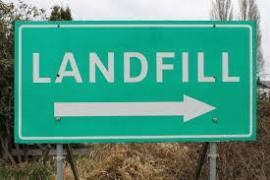-
Courses

Courses
Choosing a course is one of the most important decisions you'll ever make! View our courses and see what our students and lecturers have to say about the courses you are interested in at the links below.
-
University Life

University Life
Each year more than 4,000 choose University of Galway as their University of choice. Find out what life at University of Galway is all about here.
-
About University of Galway

About University of Galway
Since 1845, University of Galway has been sharing the highest quality teaching and research with Ireland and the world. Find out what makes our University so special – from our distinguished history to the latest news and campus developments.
-
Colleges & Schools

Colleges & Schools
University of Galway has earned international recognition as a research-led university with a commitment to top quality teaching across a range of key areas of expertise.
-
Research & Innovation

Research & Innovation
University of Galway’s vibrant research community take on some of the most pressing challenges of our times.
-
Business & Industry

Guiding Breakthrough Research at University of Galway
We explore and facilitate commercial opportunities for the research community at University of Galway, as well as facilitating industry partnership.
-
Alumni & Friends

Alumni & Friends
There are 128,000 University of Galway alumni worldwide. Stay connected to your alumni community! Join our social networks and update your details online.
-
Community Engagement

Community Engagement
At University of Galway, we believe that the best learning takes place when you apply what you learn in a real world context. That's why many of our courses include work placements or community projects.
Further Information
Related Research Projects and Institutions
The "WAFER" Project (Identification and Treatment options for Waste Streams of Certain Bromine-Containing Flame Retardants) was an EPA-funded study conducted between 2015-2019 by members of the current TERRAChem Research team. This was the first study in Ireland (and the largest in Europe at the time) to investigate the presence of hazardous brominated flame retardants (BRs) in the plastics and polymer-based textiles and foams from a range of end-of-life consumer goods, including: electrical equipment, furniture and furnishings, end of life vehicle fabrics and padding, and building insulation foams. The study found extensive presence of hazardous BFRs in end of life goods despite legislative restrictions prohibiting their use, largely due to the lack of waste screening methods capable of removing hazardous materials from circulation. This study posited the use of portable X-Ray Fluorescence (XRF) for this purpose and found it to be up to 95 % effective in screening for legislative compliance.
You can read the final report from this project via the EPA's Research Report Archives.

Following from the WAFER project, the FUEL Project was established which aimed to improve the knowledge-base ragarding POP-BFRs and PFAS in the waste and recycling streams in Ireland. Specifically, this project undertook an assessment of a range of BFRs and PFASs in leachate from domestic waste landfills across the country in order to gause the volumes of BFR/PFAS-treated waste which may have been landfilled over the last several decades, as well as assess the degree of eneivonmental contamination surrounding those sites due to run-off of landfill effluent. Air, soil, and groundwater, and raw leachate were monitored as a part of this study and, while air and soil showed little contamiantion, groundwater was of particular interest in terms of uptake of certain restricted PFASs including PFOS and PFOA. Raw leachate meanwhile showed concerning concentrations of both BFRs and PFASs, which would have implications for the environments surrounding those sites as well as for leachate which is treated at wastewater treatment plants.
You can find the final report on the FUEL project here.
 Another collaborative research project between NUI Galway and the University of Birmingham has also recently commenced. The “ELEVATE” project (Elucidating Levels and Pathways of Human Exposure in Ireland to POP-BFRs and PFOS) evaluates human exposure to POP-BFRs and PFOS through inhalation of air, ingestion of and dermal contact with household dust, as well as ingestion of water. Further details of this study can be found on the project website (www.nuigalway.ie/elevate/).
Another collaborative research project between NUI Galway and the University of Birmingham has also recently commenced. The “ELEVATE” project (Elucidating Levels and Pathways of Human Exposure in Ireland to POP-BFRs and PFOS) evaluates human exposure to POP-BFRs and PFOS through inhalation of air, ingestion of and dermal contact with household dust, as well as ingestion of water. Further details of this study can be found on the project website (www.nuigalway.ie/elevate/).
The latest NUIG-based project investigating these POPs and chemicals of emerging concern in the Irish environment was the SAFER project. This was a direct follow-on from WAFER, investigating the evolution of flame retarding chemicals in consumer goods and end of life materials, while also investigating the continued efficacy of portable XRF as a screening tool for legislative compliance. This project concluded in 2021 and the final report is due to be published in Q4 2022.
References
National University of Ireland Galway: http://www.nuigalway.ie/
University of Birmingham: http://www.birmingham.ac.uk/
EPA: http://www.epa.ie
ELEVATE Project: http://www.nuigalway.ie/elevate/
FUEL Project: http://www.nuigalway.ie/fuel/
WAFER Project: wafer-research
SAFER Project: http://www.nuigalway.ie/safer/
UNEP Stockholm Convention on Persistent Organic Pollutants: http://chm.pops.int/
http://eur-lex.europa.eu/browse/summaries.html
http://www.epa.ie/pubs/reports/enforcement/epalicensedsitesreportonwasteenforcement2014.html















